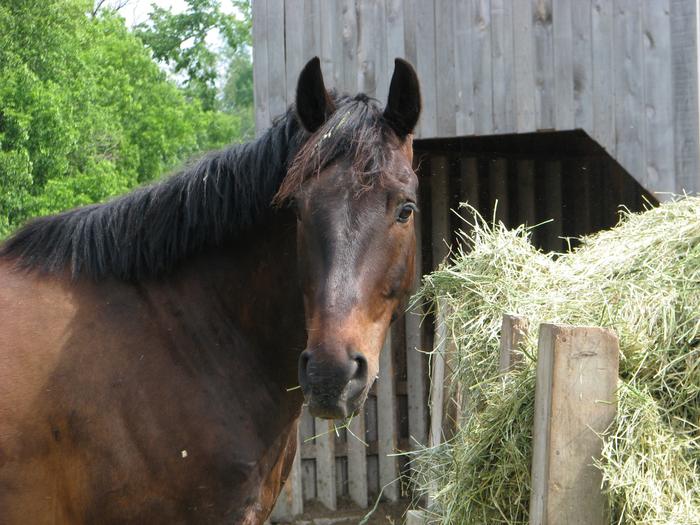
25 Sep 2020 Breathing easy: wetting, soaking, or steaming your horse’s hay
Treating hay by dipping, soaking, or steaming hay might help your horse breathe easily.
Hay is the main course, not the appetizer. Grass may be conventional, but environmental influences like allergens or a horse’s digestive challenges can present mealtime challenges. How can cut, dried, and stored grass become such a headache for their horse owners?
Allergies, inflammation, or metabolic disruption may change the way horses enjoy their main entrée. Respiratory allergies develop when a horse inhales dust, mold, mites, pollen, or other airborne particles in the hay. Mild symptoms or a more severe case of airway and lung inflammation like chronic obstructive pulmonary disease may develop.
Catherine Whitehouse, M.S. with Kentucky Equine Research (KER) commented in an article written by KER that “Managing horses with respiratory difficulties can be demanding on owners but building in a few minutes for plunging or soaking hay in water is an easy way to reduce wheezing, coughing, and breathing effort.”
Dust and allergens only present part of the problem. Even good quality hay isn’t immune from mold or fungal spores. Grass also may be high in sugars and pose a risk for laminitis, insulin resistance, or equine metabolic syndrome (EMS), particularly in overweight horses. Potassium features in hay as well. Horses with hyperkalemic periodic paralysis require a diet low in this mineral.
Testing the level of sugars, carbohydrates, vitamins, minerals, or the presence of dust and allergens determines not only what hay your horse eats but how it will ingest it. A sprinkle, a soak, or steam in water are three options for minimizing environmental and nutritional hitches in your horse’s hay.
Nicker Notes explores dipping, soaking, and steaming hay.

